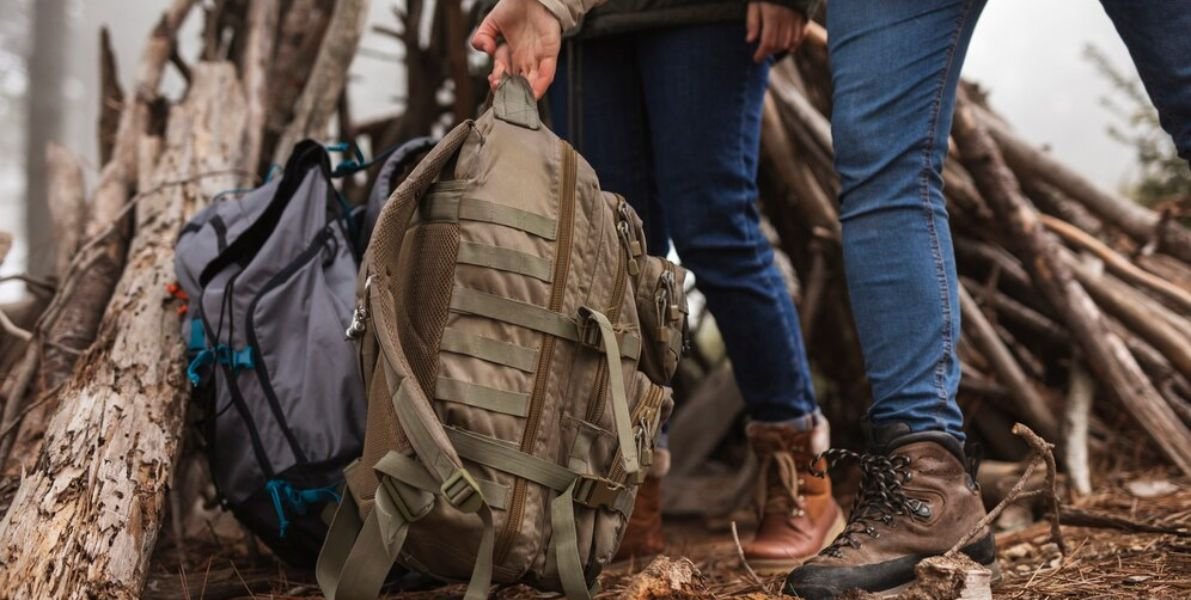Travel Essentials. There’s something incredibly refreshing about unplugging from the digital world, soaking in the fresh mountain breeze, and heading into nature. Whether you’re a trail veteran or dipping your toes into your first hiking adventure, one thing’s for sure—having the right gear can make or break your trip.
If you’ve ever trudged through a trail with a backpack that dug into your shoulders or realised too late that you forgot an important item at camp, then you know how quickly things can get frustrating. That’s exactly why we’re spotlighting two essential items every outdoor enthusiast should pack: a reliable hiking backpack and a well-equipped survival gear kit. These aren’t just extras—they’re must-haves that can make your adventure smoother and safer.
Let’s break down why they matter so much.
Essential #1: The Hiking Backpack – Your Adventure’s Best Friend

When you’re on a hike, every bit of weight counts. A well-made hiking backpack doesn’t just hold your stuff—it helps you move more comfortably and confidently through any terrain.
What Should You Look for in a Hiking Backpack?
- Comfort-First Design
The best packs are built with your body in mind. Look for features like cushioned shoulder straps, a breathable back panel to keep you cool, and a waist strap to help distribute weight evenly. These little details go a long way when you’re hiking for hours. - Plenty of Space (But Not Too Much)
Depending on how long your trip is, you’ll need somewhere between 30 and 60 litres of space. Look for backpacks with multiple compartments so you can keep your essentials organised—quick-grab pockets for snacks or a map, a main section for clothes, and side holders for things like a water bottle or stove. - Weather Protection
Hikes don’t always go as planned, and a surprise shower can quickly soak your gear. That’s why waterproof fabric or built-in rain covers are a big plus. - Hydration-Ready
Many modern packs come with sleeves for hydration bladders and hose ports, so you can sip water as you go without digging into your bag every time you’re thirsty. - Built to Last
Your backpack is going to get knocked around—scraping on trees, dropped on rocks, tossed in and out of buses. Look for durable materials like high-denier nylon that can stand up to the elements.
Why It Matters
This isn’t just a backpack—Travel Essentials is your mobile base of operations. It holds everything that keeps you going: food, water, clothing, shelter, and tools. When it’s well-designed, it makes your trip feel effortless. With a great pack on your back, you can focus on the experience instead of constantly adjusting or searching for gear.
Essential #2: The Survival Gear Kit – Small in Size, Big on Safety

As incredible as nature is, it can also be unpredictable. One wrong turn or a sudden storm can quickly turn a relaxing hike into a survival situation. That’s where a good survival gear kit comes in—it’s your backup plan for when things don’t go as expected.
What Should Be in a Quality Survival Kit?
- Core Survival Tools
Most kits include items like a multi-tool, a tactical knife, a compact flashlight, and a fire starter. Some even add extras like wire saws, emergency whistles, and rope—all of which come in handy if you need to make shelter or handle an emergency. - First Aid Basics
A decent kit will have everything from bandages and gauze to antiseptic wipes, tweezers, and medical tape. You might not need to perform surgery out there, but you’ll be glad to have these things when blisters or scrapes show up. - Navigation Gear
Your phone isn’t always reliable in the wild—batteries die and signals drop. That’s why many kits come with a basic compass, a whistle for signalling, and sometimes a lightweight guidebook. Some even include reflective blankets to keep you warm if you’re stuck out overnight. - Fire and Light Sources
Fire means warmth, cooked food, and visibility. Look for kits that include waterproof matches or magnesium fire starters, plus a flashlight or headlamp—some even have solar charging, which is a huge bonus. - Portable and Lightweight
The best part? All of this typically fits into a pouch the size of a small book. It won’t weigh you down, and it can be tossed into your backpack, your car, or even your carry-on.
Why It’s a No-Brainer
Even if your hike is just a couple of hours long, it doesn’t take much for plans to go sideways. You could get lost, encounter someone who’s injured, or have to wait out bad weather. A survival kit gives you peace of mind, knowing you’re ready for the unexpected. It’s smart, lightweight, and possibly life-saving.
Smarter Travel Starts with Better Gear
Travel is about making memories, soaking in beautiful views, and embracing new experiences—not stressing about what you forgot to pack. With a dependable hiking backpack and a compact survival kit, you’re setting yourself up for a smoother, safer, and far more enjoyable adventure.
Think of it like this: one carries the tools that keep you going, and the other holds the tools that could save your life. Together, they give you the freedom to explore with confidence—no second-guessing, no unnecessary risks.
Final Thoughts
There’s a whole world out there waiting for you to explore it—from rugged mountain trails to peaceful lakeside campsites. But heading out without the right gear is like going on a road trip without a spare tyre.
So take the time to gear up. Choose travel essentials for a hiking backpack that fits you well and holds all your essentials comfortably. Add a survival kit to your pack—not because you expect danger, but because you respect the outdoors and understand how quickly things can change.
Because in the end, it’s not just about where you go—it’s about how well you prepared travel essentials to enjoy the journey once you get there.









No Comments
Leave Comment